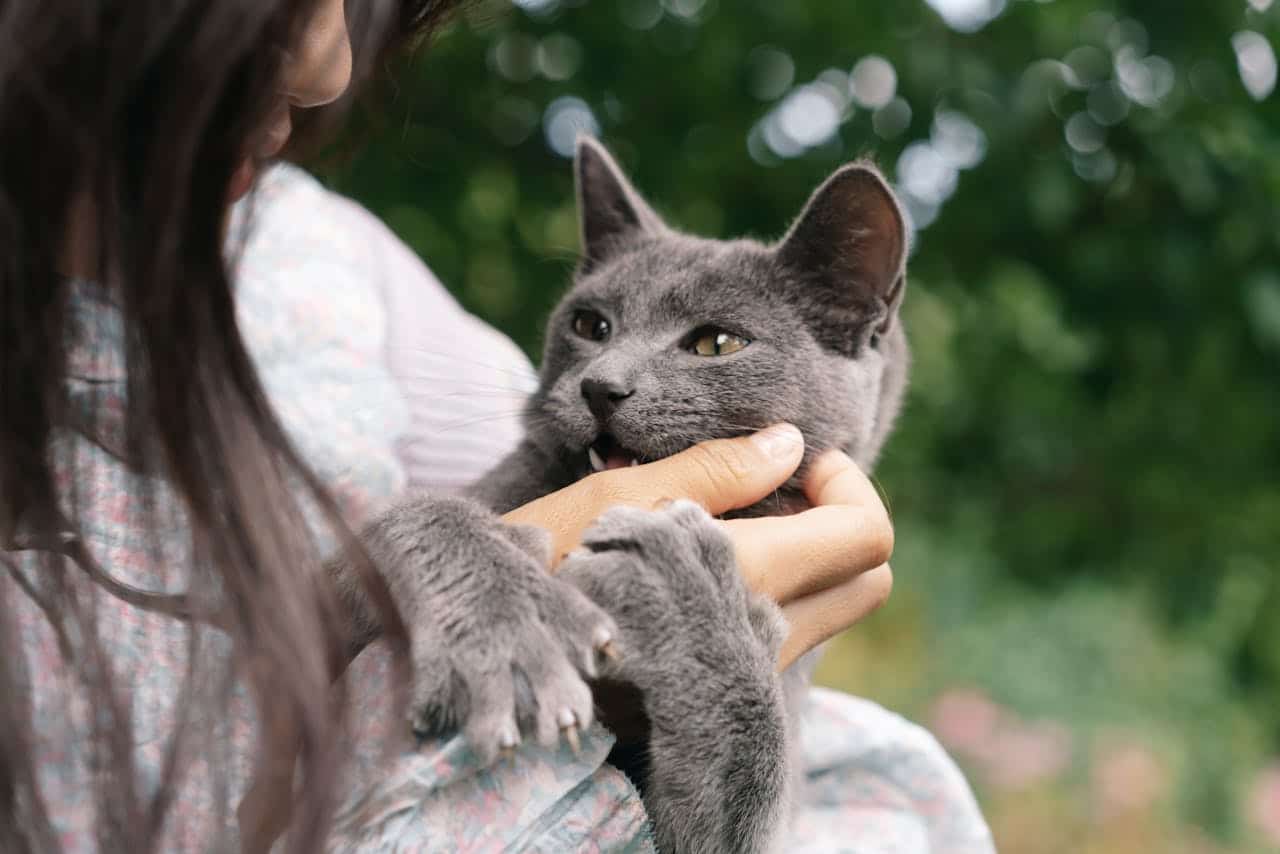If you’ve ever found yourself melting into calm as your cat curls up on your lap, you’re not imagining the sense of peace that follows. Science now confirms that the quiet companionship of a cat can trigger powerful changes in the brain. Behind that soothing purr and soft fur lies a neurochemical link that ties you and your feline friend closer than you might think.
The Science of Oxytocin and Feline Affection
Oxytocin is a neurochemical that governs social bonding, emotional recognition, and relaxation. Produced in the hypothalamus and released by the pituitary gland, it interacts with receptors in the brain and throughout the body to create feelings of comfort and attachment. During gentle physical contact with your cat, sensory signals trigger oxytocin release in both of you. This mutual response helps lower heart rate and blood pressure while easing tension in the nervous system.
In cats, oxytocin strengthens social memory and trust toward familiar humans. Studies measuring salivary and urinary hormone levels show that cats experience measurable oxytocin spikes during affectionate interactions. This suggests that their sense of connection, though more subtle than a dog’s, is deeply rooted in biology. They experience genuine reward and safety when engaging with trusted humans.

Research also indicates that oxytocin may regulate the autonomic nervous system, subtly aligning heart rhythms and breathing patterns between people and their cats. These physiological adjustments reflect a state of shared calm that reinforces emotional stability. Findings from the National Institute of Physiological Sciences in Japan confirm that cats share similar oxytocin pathways with other mammals, emphasizing its role in long-term cooperative and affectionate relationships.
This understanding reveals that the quiet act of petting a cat is more than affection. It activates a neurochemical dialogue that reduces stress, promotes trust, and supports emotional balance for both species.
The Purr Effect: A Natural Stress Reliever
The sound of a cat’s purr carries more than charm. It is a low-frequency vibration that influences both emotional and physical health. Studies have found that a cat’s purr typically resonates between 25 and 150 hertz, a range known to stimulate tissue regeneration and ease tension within muscles and joints. These subtle vibrations are thought to enhance blood flow, reduce inflammation, and assist in recovery from minor injuries. This explains why cats instinctively purr not only when content but also when injured or unwell—it serves as a natural form of self-soothing and repair.
For humans, exposure to this vibration can have measurable effects on the nervous system. Listening to or feeling a cat’s purr activates the parasympathetic nervous system, which is responsible for rest and recovery. This helps slow breathing, lower blood pressure, and quiet the body’s stress response. The rhythmic pattern acts like a form of sound therapy, gently entraining the brain toward a calmer state.
Beyond its physiological benefits, the purr also plays a psychological role. The consistent sound provides a sensory anchor that promotes focus and relaxation, similar to the effect of soft meditation tones. People who experience anxiety or insomnia often report that the presence of a purring cat helps them feel grounded and safe. The vibration signals emotional stability and trust, deepening the bond between cat and owner without the need for direct contact.
Recent research suggests that cats may modulate the intensity of their purr depending on the context. A softer, steady purr often signals comfort, while a higher-frequency variation may serve as a communication tool to solicit attention or food. Understanding these nuances can enhance the relationship between humans and cats, transforming simple companionship into mutual regulation of mood and energy.
Ultimately, the purr is more than an expression of contentment. It is a biological mechanism that links emotional security with physical healing, offering a quiet but powerful therapy that supports well-being in both species.
How Cats Communicate Their Love
Cats express affection through subtle but consistent patterns of behavior. The slow blink is one of the clearest signs of trust. When a cat closes its eyes slowly in your presence, it is signaling safety and comfort. Mirroring this gesture builds emotional assurance and reinforces connection.
Physical contact also carries meaning. Head-bumping, or bunting, uses facial scent glands to mark you as part of your cat’s social group. Gentle kneading against your skin or soft surfaces stems from kittenhood behavior and reflects contentment and relaxation. These quiet touches show familiarity and acceptance rather than dominance or dependence.

Cats communicate vocally in tones unique to their bond with you. Trills, chirps, and soft meows are often reserved for interaction with humans, functioning as invitations for attention or acknowledgment. The tail offers additional context. An upright tail with a curved tip indicates friendliness, while a relaxed sway shows curiosity and ease.
Proximity is another key signal. Cats that choose to rest near you or follow you between rooms are engaging in companionable behavior that reflects social attachment. Some will bring small gifts or share space during restful moments to demonstrate inclusion and trust.
Recognizing these cues deepens mutual understanding without forcing interaction. Each behavior is an expression of security within your shared environment, a language of comfort and connection that develops only through patience and respect.
The Mind-Body Benefits of Cat Companionship
Sharing your life with a cat has measurable effects on both mental and physical health. The simple routines of feeding, grooming, and interacting with a pet create structure and consistency, which have been shown to support emotional regulation and resilience to daily stress. Research indicates that pet ownership is linked with reduced incidence of hypertension, lower resting heart rates, and improved cardiovascular recovery after stressful events. These physiological benefits reflect the body’s response to the comfort and security derived from consistent companionship.
On a neurological level, living with a cat stimulates pathways that promote balance between the sympathetic and parasympathetic nervous systems. This steady rhythm of activation and recovery helps stabilize hormone levels and promotes restorative sleep. Regular positive contact with a pet can also influence neuroplasticity, encouraging new neural connections that support learning, memory, and mood regulation.
Cats may indirectly improve cognitive function by encouraging mindfulness and sensory awareness. The sound of gentle movement or the softness of fur draws attention to the present moment, reducing rumination and mental fatigue. This sensory grounding has been found to enhance focus and emotional clarity, providing subtle cognitive benefits over time.
For individuals coping with chronic pain, depression, or loneliness, the companionship of a cat can foster a sense of purpose and connection. The responsibility of care creates motivation and routine, while nonjudgmental presence alleviates social isolation. Studies involving animal-assisted interventions show that even short periods of interaction with cats can reduce anxiety and improve pain tolerance through endorphin release.
In essence, the health effects of cat companionship arise from a combination of physiological regulation, sensory engagement, and emotional support. This bond cultivates stability within the body and calm within the mind, reinforcing the intricate link between emotional wellness and physical vitality.
My Personal RX on Strengthening Your Bond with Your Cat and Yourself
As a physician who believes in the connection between emotional health and physical well-being, I often remind patients that healing does not always come from medicine alone. Sometimes, it begins with love, connection, and a quiet moment shared with a beloved pet. Your cat can be a mirror of your emotional state and a natural catalyst for calm.
- Create a Routine of Affection: Set aside a few minutes each day to sit with your cat and focus on touch and calm breathing. This can serve as a mindful practice that releases oxytocin and reduces anxiety.
- Practice Mindful Eating with Your Pet Nearby: The sound of your cat’s purr can help you slow down and enjoy your meals. Pair this with Mindful Meals, a supplement designed to support digestion and mental focus, turning mealtime into an experience of balance.
- Support Gut-Brain Health: Your gut and brain communicate constantly, just as you and your cat do. Consider adding MindBiotic, a blend of probiotics and adaptogens that promotes mental clarity, calm, and digestive wellness.
- Embrace the Power of Presence: Put away distractions and focus on your cat’s breathing and body language. These moments of connection can help lower your heart rate and improve mood stability.
- Encourage Gentle Play: Interactive play with your cat boosts serotonin and dopamine, which complement oxytocin’s calming effects.
- Reduce Environmental Stress: Cats are sensitive to noise and changes in routine. Creating a peaceful home supports both your nervous system and your cat’s.
- Get Outside When Possible: Supervised outdoor time or a walk in a cat-safe harness can expose you and your pet to fresh air and vitamin D, both linked to improved mental health.
- Maintain a Consistent Sleep Schedule: Cats thrive on routine, and consistent rest helps regulate oxytocin cycles in both humans and animals.
- Share Quiet Evenings: Whether reading, meditating, or simply resting, let your cat’s purr remind you to breathe deeply and relax.
- Recognize Your Cat’s Boundaries: Affection on your cat’s terms builds trust and prevents overstimulation, allowing oxytocin to flow naturally without stress.
Taking the time to nurture this relationship does more than strengthen your bond with your pet. It nourishes your mental, emotional, and physical health in measurable ways. Love, as it turns out, truly is medicinal.
Sources:
- Beetz, A., Uvnäs Moberg, K., Julius, H., & Kotrschal, K. (2012). Psychosocial and psychophysiological effects of human animal interactions. The possible role of oxytocin. Frontiers in Psychology, 3, 234. https://www.frontiersin.org/journals/psychology/articles/10.3389/fpsyg.2012.00234/full
- Nagasawa, T., Ohta, M., Uchiyama, H., & colleagues. (2021). The urinary hormonal state of cats associated with social interaction with humans. Frontiers in Veterinary Science, 8, 680843. https://www.frontiersin.org/journals/veterinary-science/articles/10.3389/fvets.2021.680843/full
- Nagasawa, T., Kimura, T., Ohta, M., & colleagues. (2023). Effects of interactions with cats in domestic environment on the psychological and physiological state of their owners. Animals, 13(13), 2116. https://www.mdpi.com/2076-2615/13/13/2116
- Hattori, M., & colleagues. (2024). Exogenous oxytocin increases gaze to humans in male cats. Scientific Reports, 14, 11049. https://www.nature.com/articles/s41598-024-59161-w
- Scientific American. (2006). Why do cats purr? https://www.scientificamerican.com/article/why-do-cats-purr/
- von Muggenthaler, E. (2001). The felid purr. A healing mechanism? The Journal of the Acoustical Society of America, 110(5), 2666. https://pubs.aip.org/asa/jasa/article/110/5_Supplement/2666/550913/The-felid-purr-A-healing-mechanism
- Humphrey, T., Proops, L., Forman, J., & McComb, K. (2020). The role of cat eye narrowing movements in cat human communication. Scientific Reports, 10, 16503. https://www.nature.com/articles/s41598-020-73426-0











 Subscribe to Ask Dr. Nandi YouTube Channel
Subscribe to Ask Dr. Nandi YouTube Channel










